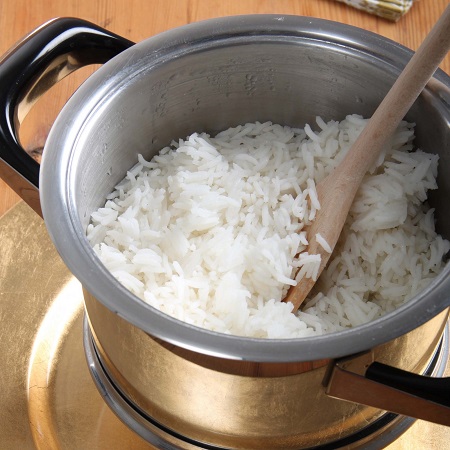In the average Nigerian home, rice is a must-eat food on a daily basis, especially when you have children around.
It’s so easy to cook — or so many of us assume, what with the unceremonious ways we pour it into the pot and cook it in a jiffy!
Yet, researchers are saying that the way we cook rice can lead to diseases and death!
Scientists warn that rice contains a worrying amount of arsenic, a harmful chemical that can cause heart disease, diabetes and cancer.
According to a group of researchers in Northern Ireland, the way most people cook rice, which is by boiling it in a pan until it absorbs the water, doesn’t get rid of the toxin.
Researchers warn that traces of the poison, arsenic, a chemical that contaminates rice as a result of industrial toxins and pesticides used in the growing process, can be found in the rice even after cooking the way we do.
The safest way to cook rice is to soak it overnight first, wash it with cool water the following morning, before finally cooking it.
The researchers found that this reduced arsenic levels by 80 percent.
Chronic exposure to arsenic has recognised links to a range of health problems including heart disease, diabetes and cancer.
Thankfully, there’s no reason to panic just yet, as a series of experiments showed that it is possible to reduce our levels of exposure to arsenic by simply changing the way we cook rice.
A professor of biological sciences at Queens University Belfast, Andy Meharg, tested three ways of cooking rice to see whether it altered the levels of arsenic.
In the first method, he used a ratio of two parts water to one part rice, allowing the water to ‘steam out’, as identified above.
In the second, he used five parts water to one part rice, washing off excessive water before serving. This saw the levels of arsenic almost halved.
Finally, the rice was soaked in water overnight before being cooked the next day, resulting in an 80 per cent reduction of the toxin.
For the safest results, the overnight rice should be rinsed until the water is clear, before being drained and boiled in a saucepan using a ratio of five parts water to one part rice.

